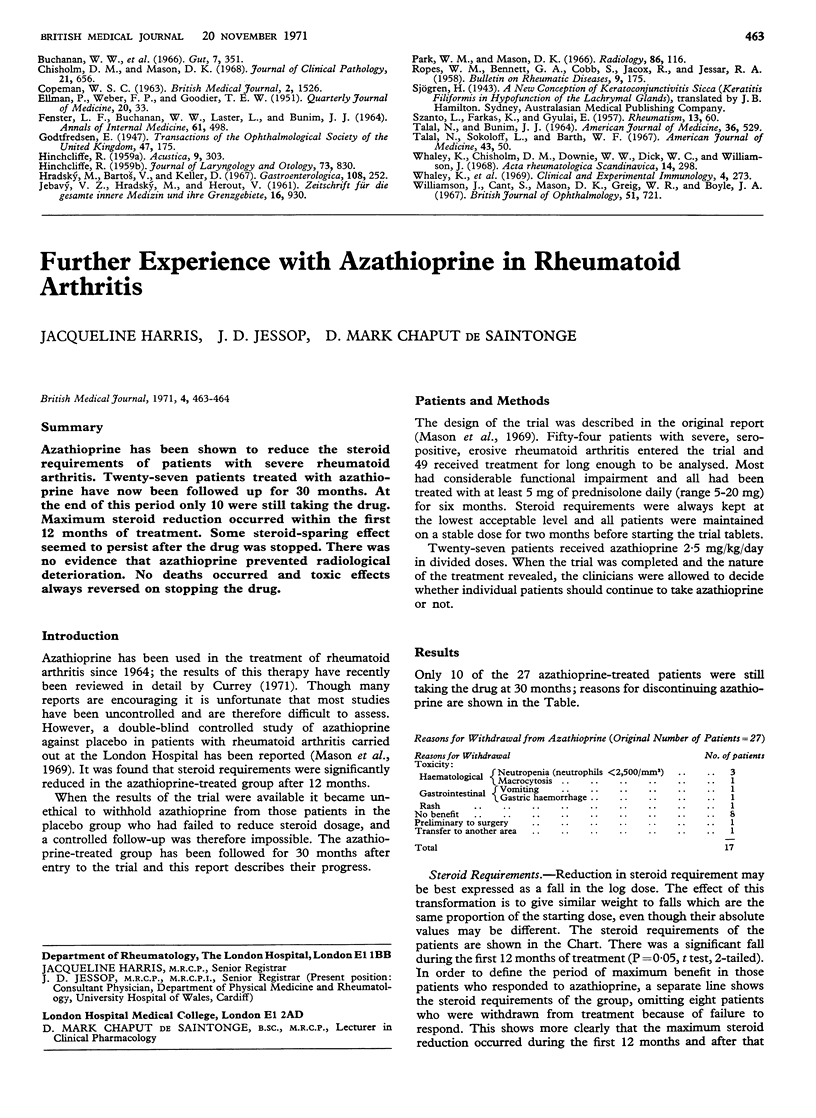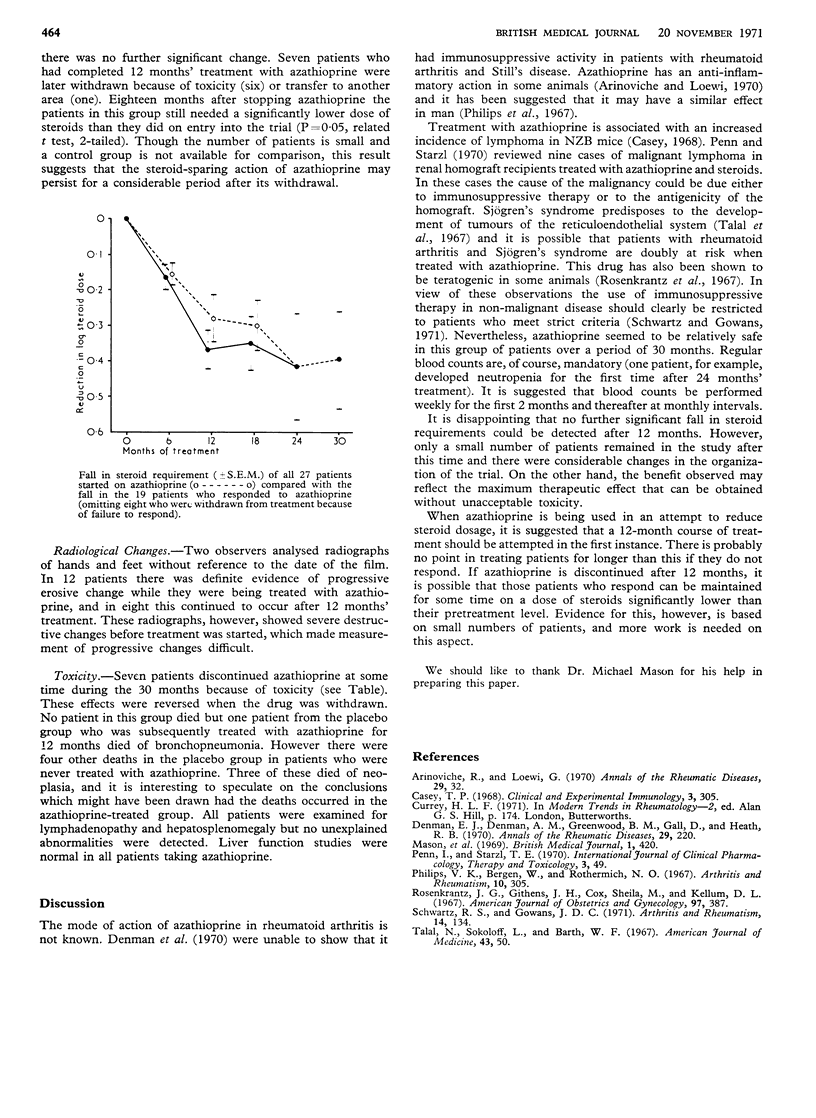Abstract
Azathioprine has been shown to reduce the steroid requirements of patients with severe rheumatoid arthritis. Twenty-seven patients treated with azathioprine have now been followed up for 30 months. At the end of this period only 10 were still taking the drug. Maximum steroid reduction occurred within the first 12 months of treatment. Some steroid-sparing effect seemed to persist after the drug was stopped. There was no evidence that azathioprine prevented radiological deterioration. No deaths occurred and toxic effects always reversed on stopping the drug.
Full text
PDF

Selected References
These references are in PubMed. This may not be the complete list of references from this article.
- Casey T. P. Azathioprine (Imuran) administration and the development of malignant lymphomas in NZB mice. Clin Exp Immunol. 1968 May;3(4):305–312. [PMC free article] [PubMed] [Google Scholar]
- Denman E. J., Denman A. M., Greenwood B. M., Gall D., Heath R. B. Failure of cytotoxic drugs to suppress immune responses of patients with rheumatoid arthritis. Ann Rheum Dis. 1970 May;29(3):220–231. doi: 10.1136/ard.29.3.220. [DOI] [PMC free article] [PubMed] [Google Scholar]
- Rosenkrantz J. G., Githens J. H., Cox S. M., Kellum D. L. Azathioprine (Imuran) and pregnancy. Am J Obstet Gynecol. 1967 Feb 1;97(3):387–394. doi: 10.1016/0002-9378(67)90503-0. [DOI] [PubMed] [Google Scholar]
- Schwartz R. S., Gowans J. D. Guidelines for the use of cytotoxid drugs in rheumatic diseases. Arthritis Rheum. 1971 Jan-Feb;14(1):134–134. doi: 10.1002/art.1780140118. [DOI] [PubMed] [Google Scholar]


